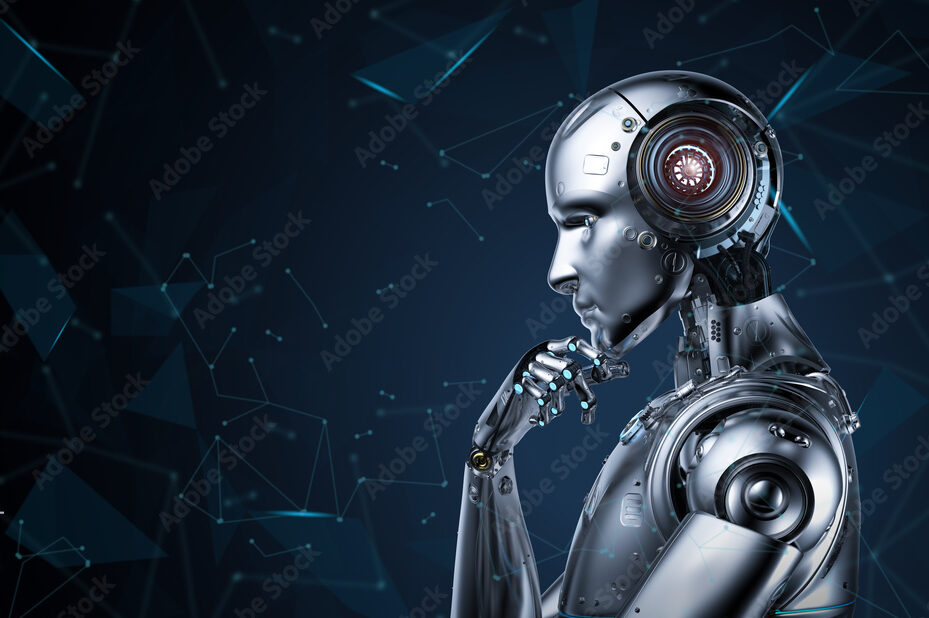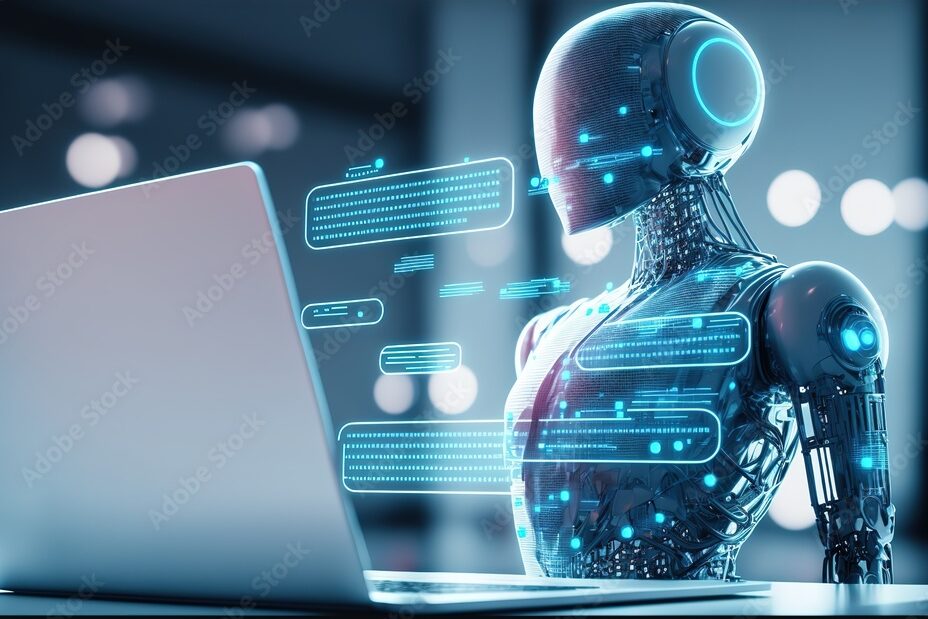In the ever-evolving landscape of technology, Artificial Intelligence (AI) is like a master of disguise, quietly weaving its transformative magic across industries. While we’re familiar with AI’s more visible applications, a realm of hidden AI technologies is operating behind the scenes, reshaping our world in remarkable ways. In this article, we unveil these enigmatic AI marvels and challenge you to guess their identities.
Stay tuned for the continuation of this article, where we’ll uncover five more hidden AI technologies that are quietly revolutionizing industries and paving the way for a smarter, more connected future. Can you guess what they are?

1. Swarm Intelligence: Nature’s Blueprint for Efficiency
While we marvel at the precision of AI, Swarm Intelligence draws inspiration from nature’s collaborative ecosystems. Imagine algorithms that mimic the behavior of social insects like ants and bees. These decentralized systems optimize tasks like resource allocation, routing, and logistics, presenting a paradigm shift in efficiency.
Decoding Swarm Intelligence:
Swarm Intelligence leverages the collective intelligence of decentralized agents to solve complex problems. Algorithms based on this concept find applications in routing optimization, drone swarms, and even traffic management, leading to streamlined and resource-efficient solutions.
2. Neuromorphic Computing: Bridging the Gap Between Man and Machine
Nature’s design meets AI in Neuromorphic Computing, a technology emulating the human brain’s architecture. Specialized hardware and algorithms facilitate faster information processing with lower energy consumption. From robotics that mimic human dexterity to cognitive computing, this hidden gem is revolutionizing AI’s capabilities.
Unveiling Neuromorphic Computing:
Neuromorphic Computing utilizes hardware and algorithms inspired by the brain’s neural networks. The technology excels in tasks requiring pattern recognition, making it ideal for applications like image and speech recognition. Its potential to process vast amounts of data efficiently positions it as a cornerstone for future AI advancements.
3. Explainable AI (XAI): Peering Inside the AI Black Box
The intricate decisions of AI systems become more transparent with Explainable AI (XAI). By demystifying the inner workings of algorithms, XAI ensures accountability and fosters trust. Industries like healthcare and finance benefit from decipherable AI-driven decisions, enabling more informed choices.
Unmasking Explainable AI (XAI):
Explainable AI employs techniques to make AI decisions understandable to humans. This technology finds significance in critical applications such as medical diagnoses, where insights into the AI’s reasoning process are essential for building trust between doctors and machine intelligence.
4. Federated Learning: Collaboration Without Compromising Privacy
Federated Learning introduces a groundbreaking approach to AI model training. Devices learn locally from their users’ data and contribute insights to a central model. This collaborative learning process enhances model accuracy while preserving data privacy, a pivotal advancement for industries handling sensitive information.
Demystifying Federated Learning:
Federated Learning enables multiple devices to collaboratively train a shared model while keeping data decentralized. This technique benefits applications like personalized medical diagnoses, as AI models can learn from diverse data sources without compromising patient privacy.

5. Emotional AI: Bridging the Human-Machine Emotion Gap
Enter the realm of Emotional AI, where machines perceive and respond to human emotions. By analyzing facial expressions, tone, and gestures, Emotional AI enhances customer interactions, provides mental health support, and even augments entertainment experiences.
Unveiling Emotional AI:
Emotional AI harnesses computer vision and natural language processing to detect and interpret human emotions. This technology empowers AI systems to offer personalized recommendations, enhance virtual reality environments, and contribute to mental well-being applications.
6. AI-Driven Personalized Learning: Tailoring Education for Success
Education takes a personalized turn with AI-driven systems that adapt learning content and methods based on individual student needs. By analyzing learning patterns and preferences, these technologies offer a tailored education experience that maximizes engagement and understanding.
Delving into AI-Powered Personalized Learning:
AI-powered personalized learning utilizes data analytics to understand each student’s learning style, pace, and strengths. This technology transforms traditional classrooms into dynamic, student-centric environments where educational content evolves to match the unique needs of each learner.
7. AI in Drug Discovery: Accelerating Pharmaceutical Innovations
The pharmaceutical industry gains a powerful ally in AI, which expedites the drug discovery process. By sifting through vast datasets, AI identifies potential drug candidates, predicts their effectiveness, and even simulates their interactions within the human body, significantly reducing time and costs.
Unearthing AI’s Role in Drug Discovery:
AI in drug discovery employs machine learning algorithms to analyze molecular data and predict a compound’s biological activity. This hidden gem shortens the development timeline and opens doors to breakthrough treatments for diseases that have eluded traditional methods.
8. AI-Enhanced Creativity: Redefining Art and Innovation
AI isn’t just analytical—it’s also a wellspring of creativity. In art and design, Generative Adversarial Networks (GANs) produce novel and imaginative outputs, revolutionizing industries from fashion and marketing to architecture and entertainment.
Unmasking AI’s Creative Potential:
Generative Adversarial Networks (GANs) pit two AI models against each other: a generator and a discriminator. This dynamic duo produces authentic and diverse creative outputs, showcasing AI’s ability to inspire novel designs, visual arts, and imaginative concepts.
9. AI-Powered Cybersecurity: Safeguarding the Digital Landscape
The digital realm’s security gains an invisible ally in AI-powered cybersecurity. These systems analyze massive streams of data to detect and prevent cyber threats in real-time. AI’s adaptive learning helps fortify defenses against evolving attacks, preserving the integrity of digital assets.
Unveiling the Guardians of Digital Security:
AI-powered cybersecurity combines machine learning and behavioral analytics to identify unusual patterns that indicate cyber threats. By continuously learning from emerging attack methods, these systems stay ahead of malicious actors, ensuring the confidentiality and availability of sensitive data.

10. Conservation AI: Protecting Endangered Species and Ecosystems
In the realm of environmental conservation, AI’s stealthy presence aids in safeguarding endangered species. Utilizing camera traps, audio sensors, and machine learning algorithms, researchers monitor wildlife populations, detect poaching activities, and gain insights into critical ecosystems.
Revealing the Impact of Conservation AI:
Conservation AI empowers researchers with tools to analyze vast amounts of environmental data, aiding in wildlife population management and ecosystem health assessments. By providing real-time insights, this technology plays a pivotal role in preserving Earth’s rich biodiversity.
As we conclude our journey through these 10 hidden AI technologies, it’s evident that AI’s influence extends far beyond what meets the eye. From enhancing creativity to safeguarding our digital realm and natural world, these undercover innovations are shaping a future that seamlessly integrates human ingenuity with AI’s transformative potential.
